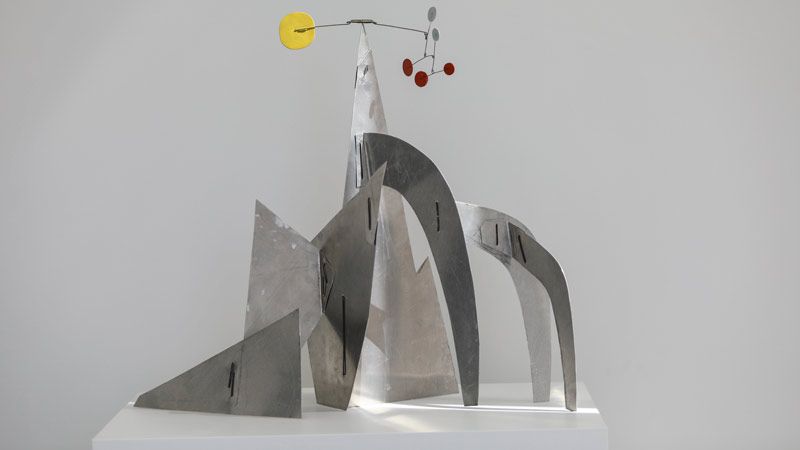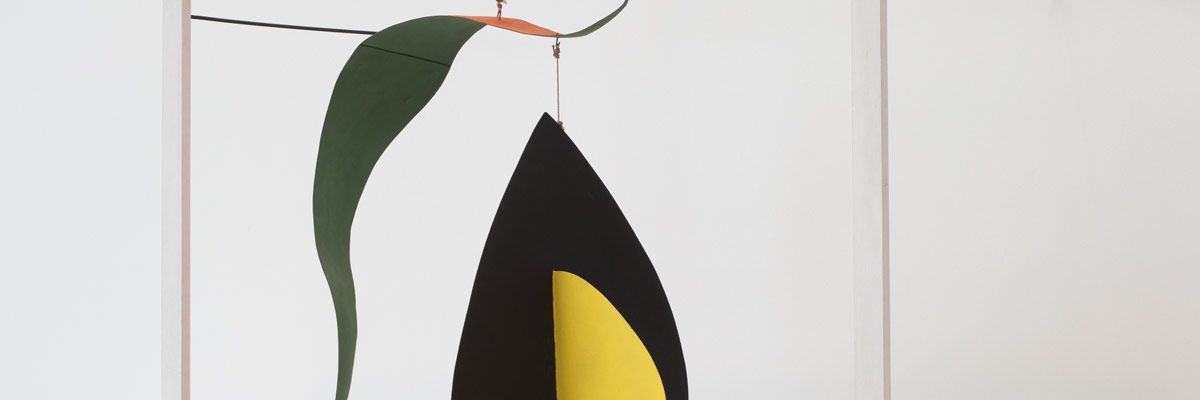

All stories have a beginning, and Calder’s begins in 1898 in Pennsylvania, in the United States. Calder was born into a family of artists. In the mid-1920s, Calder enrolled in the Art Students League in New York City. After that, in 1926, Calder moved to Paris, where he expanded upon his first great innovation—wire sculpture, a radical new form of massless sculpture in which he “drew” in three-dimensions the portraits of friends, family, and well-known figures of the day. Many of these early sculptures had kinetic elements and some rotated from the ceiling.
In 1930, something happened that changed the course of Calder’s work: he visited Piet Mondrian’s studio in Paris. Do you know who Mondrian is? I’m sure you do. Search for him on the Internet and you’ll soon recognize his work. Mondrian’s studio was like an art installation, and on one wall, there were rectangles of colored cardboard for compositional experimentation. An intense light entered through the window. Calder was amazed by the environment, and it seemed to him that the rectangles could move. He pointed this out to Mondrian, who denied the need for such movement, but for Calder it was the beginning of something very interesting.
A year later, Calder began to develop three- and four-dimensional kinetic abstractions, such as the works that you see here. Dubbed “mobiles” by Marcel Duchamp, they are like paintings in motion; in this case, one moves by a motor—which you can see if you look at the work from the side—while the other moves by air currents.
For reasons of conservation, the works cannot move now, but after observing them for a little while, we can see how they would move.
Additionally, at the audiovisual room, there are short videos in which you can enjoy footage of works in motion.
Do you want to know another story about Calder? Go to the window that looks out onto the Jardines de Pereda.
If you need information or want to make a suggestion, please contact us below. Thank you.
We use cookies to gather data about your visit and analyse it in order to improve our website and serve personalised content. Go to our cookie policy for further information and manage your cookie settings.
Choose the types of cookies you want to allow on our website and then click the save button to save your preferences.

This content is blocked. Accept cookies within the '%CC%' category to view this content.